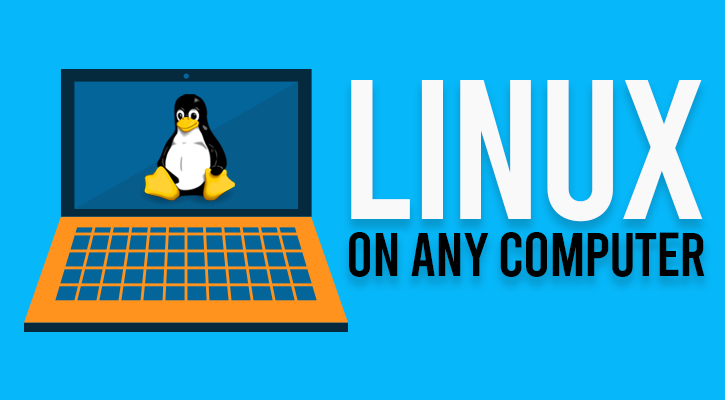

You’ll see the default VDI storage location and size on the next screen, leave them as they are, and select Create.Choose Dynamically allocated and select Next.As with most Linux distributions, it can be installed on many devices. You might install it on your PC (as per the main portion of this tutorial) or you might find another way to do it. Choose VDI (VirtualBox Disk Image) and select Next. Open VirtualBox and click on Tools, then click on Preferences. 5 Ways to Install Ubuntu How you install Ubuntu is up to you. Next, you’ll need to choose the type of file you’d like to use for the virtual hard disk.

Choose the Create a virtual hard disk now option and click Create. The Linux distribution will be installed on an internal system drive, just like Windows.
 On the next screen, you’ll need to create a new hard disk for your virtual machine. To install Linux on a computer or laptop, you will need: A suitable target device (the PC or laptop) note that installing Linux is destructive to existing data on your. You have two options to choose from you could either use Dynamically allocated storage which grows as you keep using the storage, or allocate a Fixed-size storage limit that offers faster performance. Once downloaded the ISO file, We have two options: burn it and install it from a CD/DVD or do it in a pendrive of at least 2 GB, for what you will need software. This portion will only be accessible to your virtual operating system, i.e., Ubuntu in this case. You’ll also need to allocate a portion of your hard disk to the virtual machine. For instance, if you have 16GB total RAM, allocate 4GB to the virtual machine. Ideally, you should choose to allocate about a fourth of your PC’s RAM. Allocate Memory size to your virtual machine. Do this to begin the final part of your dual boot setup. InstallĪfter a few more simple steps, you should be given the option to “restart now”. The left box represents Windows and should say Files, whereas the right box represents Ubuntu and should say Ubuntu accordingly. The final important step is to decide how much space to allocate to Ubuntu and Windows. There are several suggestions on Ask Ubuntu for fixing the problem of Ubuntu installer not detecting Windows. Before you can create an installation media, you first need the right tools to create one. Two options should be available: booting from UEFI or from BIOS (which can be changed from the BIOS menu). If you cannot see the “Install Ubuntu alongside Windows 10” option, you most likely need to change where you are booting from. It is very important that you are able to see the “Install Ubuntu alongside Windows 10” option - and that you choose this.ĭo not choose “Erase disk and install Ubuntu” if you already have an OS you would like to keep because everything will be wiped with this option. The “Install Ubuntu alongside Windows 10” option must be shown - this is how we install Ubuntu without wiping Windows.
On the next screen, you’ll need to create a new hard disk for your virtual machine. To install Linux on a computer or laptop, you will need: A suitable target device (the PC or laptop) note that installing Linux is destructive to existing data on your. You have two options to choose from you could either use Dynamically allocated storage which grows as you keep using the storage, or allocate a Fixed-size storage limit that offers faster performance. Once downloaded the ISO file, We have two options: burn it and install it from a CD/DVD or do it in a pendrive of at least 2 GB, for what you will need software. This portion will only be accessible to your virtual operating system, i.e., Ubuntu in this case. You’ll also need to allocate a portion of your hard disk to the virtual machine. For instance, if you have 16GB total RAM, allocate 4GB to the virtual machine. Ideally, you should choose to allocate about a fourth of your PC’s RAM. Allocate Memory size to your virtual machine. Do this to begin the final part of your dual boot setup. InstallĪfter a few more simple steps, you should be given the option to “restart now”. The left box represents Windows and should say Files, whereas the right box represents Ubuntu and should say Ubuntu accordingly. The final important step is to decide how much space to allocate to Ubuntu and Windows. There are several suggestions on Ask Ubuntu for fixing the problem of Ubuntu installer not detecting Windows. Before you can create an installation media, you first need the right tools to create one. Two options should be available: booting from UEFI or from BIOS (which can be changed from the BIOS menu). If you cannot see the “Install Ubuntu alongside Windows 10” option, you most likely need to change where you are booting from. It is very important that you are able to see the “Install Ubuntu alongside Windows 10” option - and that you choose this.ĭo not choose “Erase disk and install Ubuntu” if you already have an OS you would like to keep because everything will be wiped with this option. The “Install Ubuntu alongside Windows 10” option must be shown - this is how we install Ubuntu without wiping Windows.







 0 kommentar(er)
0 kommentar(er)
